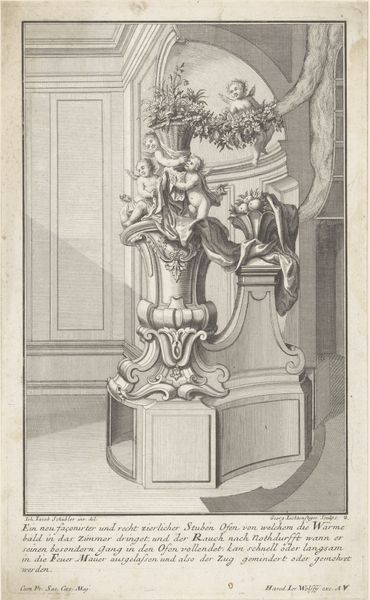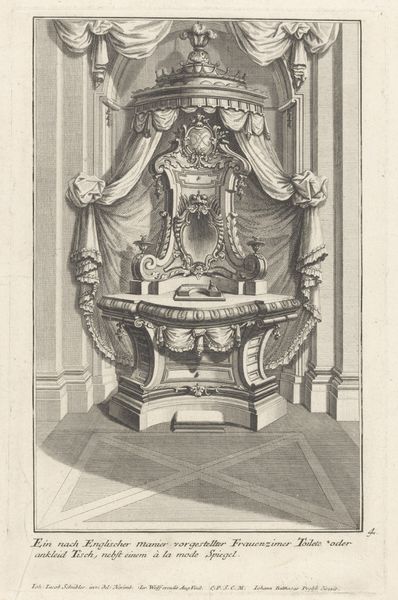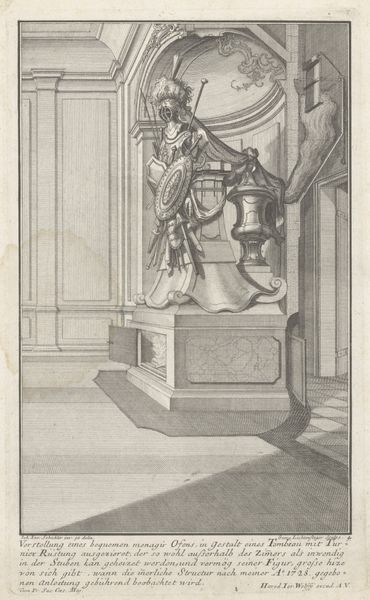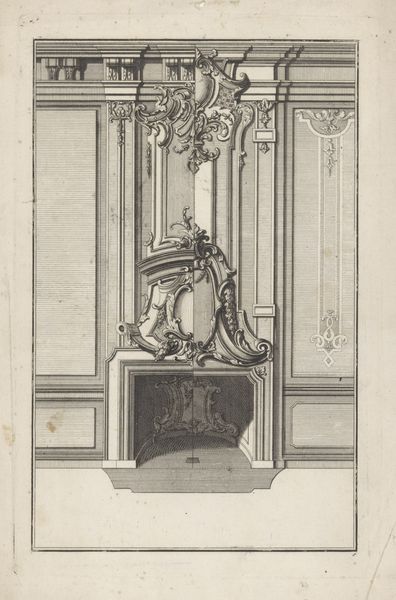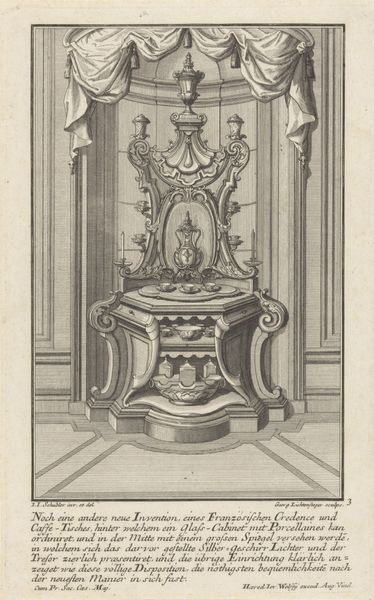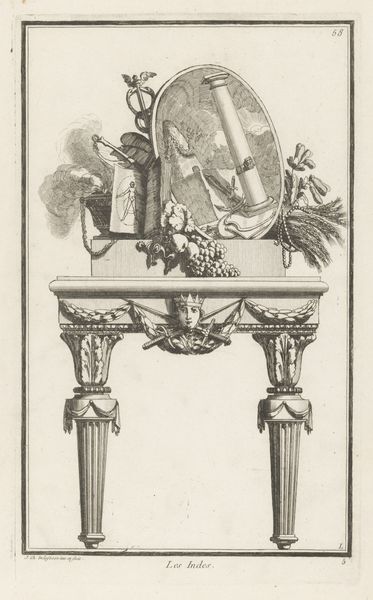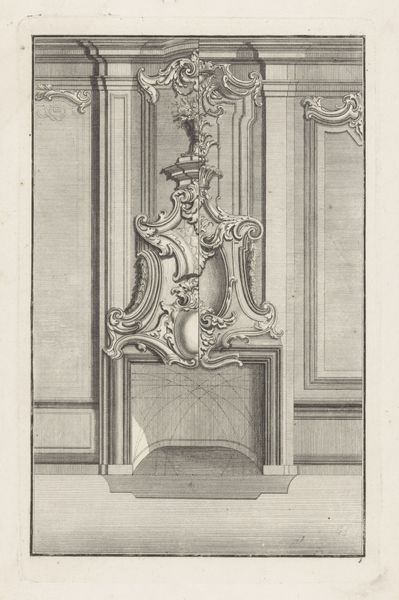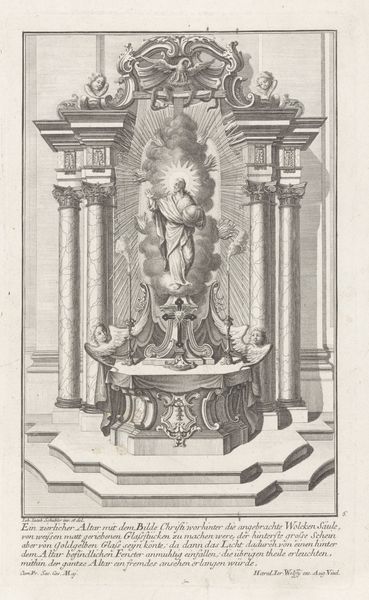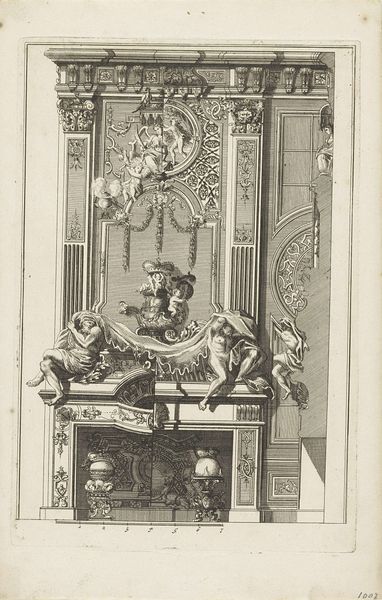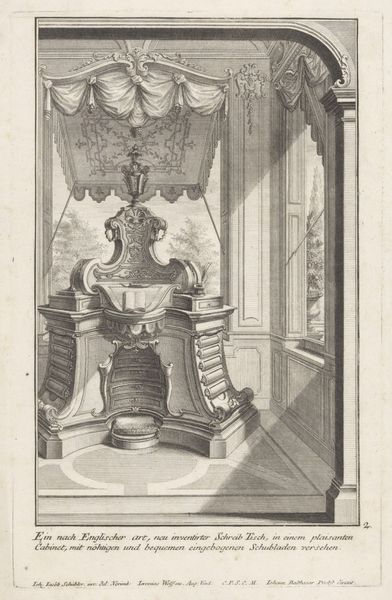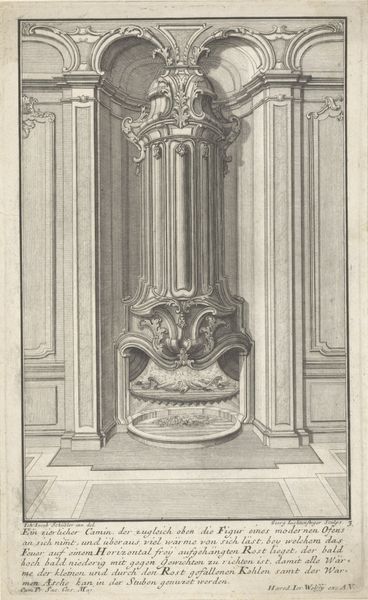
drawing, print, engraving
#
drawing
#
baroque
# print
#
old engraving style
#
geometric
#
engraving
Dimensions: height 298 mm, width 199 mm
Copyright: Rijks Museum: Open Domain
Curator: This engraving, entitled "Doopvont," dating from after 1724, is attributed to Johann Matthias Steudlin and is part of the Rijksmuseum collection. Editor: My initial reaction is one of formality, and coolness. It looks like the stage has been set but the play hasn’t started yet. What do you think about the role of sacred space here? Curator: Well, from an art historical perspective, the engraving documents the elaborate design of a baptismal font within a church setting, it gives insight into 18th-century liturgical design and its intended function within religious practices and wider religious ideology. The image itself reinforces established hierarchical social systems in post-reformation churches. Editor: It also makes me think about the role of spectacle in faith. It’s baroque but feels stripped-down, like the bare bones of opulent displays, meant to enforce faith through a combination of awe and architectural authority, wouldn’t you say? How would such art influence gender or class during worship in these contexts? Curator: Yes, these highly ornamental architectural prints could have reinforced prevailing gender roles within society and encouraged conformity to prescribed societal roles in baroque society. Spaces, imagery and sacred events all were subject to strict regulations. Editor: It feels sterile. Can we consider how the act of portraying a site designed for purification using these media affect our understanding of it, particularly in terms of identity or belonging? It’s the tension between community and order—what and whom these structures exclude and include in the sacred act. Curator: Precisely! How is inclusion and exclusion demonstrated or emphasized, in addition to, say, performance? This image is very much indicative of baroque styles and ideologies in general, its role in both maintaining power structures and simultaneously shaping or being reshaped, by them is of course, up for debate. Editor: Thank you, this has really brought the image to life for me, making it feel less rigid and more alive as a document of past practices that impact today. Curator: Indeed, examining art through various contextual lenses can enrich our understanding, bridging historical design and contemporary reflections on faith and society.
Comments
No comments
Be the first to comment and join the conversation on the ultimate creative platform.
